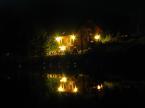Information
WIKI REFRESH Sebeş (German: Mühlbach, Hungarian: Szászsebes) is a city in Alba County, central Romania, southern Transylvania.
Ethimology
The name comes from the hungarian word sebes meaning fast and referring to the river which flows through the city. The german name Mühlbach means mill river referring to the hidraulic mills that were built along the river.
Geography
The city lies on the Mureş River valley and it straddles Sebeş river. It is at the crossroad of two main routes in Romania: E68 European route - DN1 coming from Sibiu and going towards Deva and E81 European route - DN7 coming from Sibiu and going towards Alba-Iulia and Cluj Napoca.It is situated at 15 km south opf the county capital Alba Iulia and it has under its administration also the following villages:
- Petresti - 3,5 km south.
- Lancrăm – 2 km north.
- Rahău - 6 km east.
History
Originally a Dacian settlement, Sebeş was incorporated into the Roman Empire. After being conquered by the Kingdom of Hungary, Sebeş was settled by the Transylvanian Saxons in the 12th century and became an important city in medieval Transylvania. Its city walls were reinforced after Tatar invasions, but the city was occupied in 1438 by the Ottoman Empire. John I Zápolya died in Sebes in 1540. The Diet of Transylvania met in Sebeş in 1546, 1556, 1598 and 1600. The location of the meetings, the Zápolya House, is now a museum. After the union with Romania in 1918, the first mayor of the city was Lionel Blaga, the brother of the romanian poet and philosopher Lucian Blaga who was born in the nearby village of Lancrăm.
Economy
Today Sebeş is a city with a dynamic economy, having received in the last decade important foreign investments: wood processing and leather goods manufacturing are the chief domains of the local industry.
Population
The ethnical composition is as follows:
- Romanians - 25.580 - 92,41 %
- Romas - 1.406 - 5,08 %
- Germans - 425 - 1,54 %
- Hungarians - 218 - 0,79 %
- Other - 51 - 0,18 %
Forrás: Wikipedia
Sebeş

 English
English









